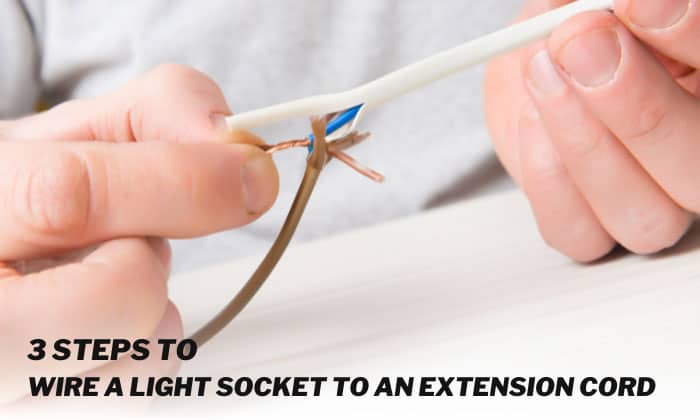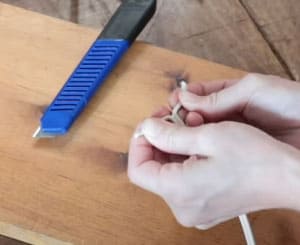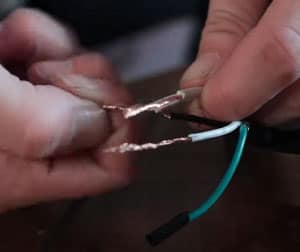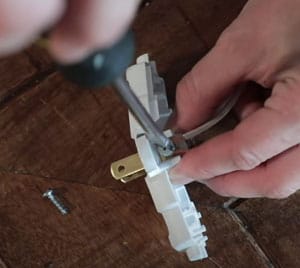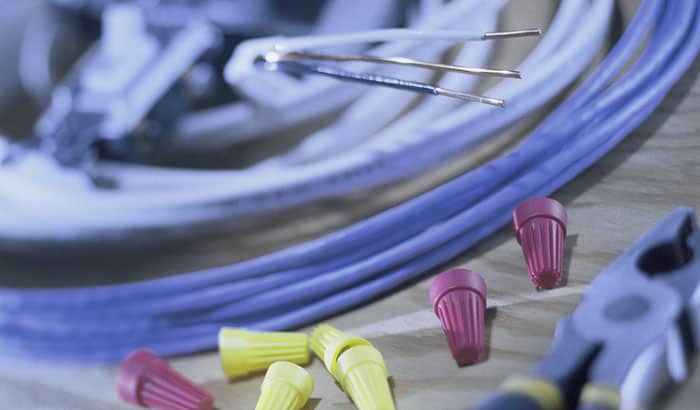Is there a part of your house with poor lighting that makes it hard to find what you are looking for? Or perhaps, your work table lacks a lamp?
In either case, having a light bulb extension cord might be very helpful. If you have an old but functional extension cord, you can save money by making one yourself.
To learn how to wire a light socket to an extension cord, simply follow the instructions below.
Table of Contents
Step-by-Step to Wire a Light Socket to an Extension Cord
Various tutorials on making light extension cords are available online nowadays. You can search for how to make bulb socket extension cord tagalog or any language version you want.
However, to make it easy, here’s a simple and easy guide to follow so that you will not miss the most important details. Without further ado, here is how to wire a bulb socket extension cord steps.
What To Prepare To Wire Extension Cord To Light Fixture
- Old light-duty twin-wire indoor or outdoor extension cord
- Set of screwdrivers
- Light-bulb socket
- New light bulb
- Wire cutter
- Wire stripper
Step 1. Cut the Outlet End of the Cord and Strip It
To start, get your old extension cord and cut the outlet part using your wire cutter and split the wire.
Next, strip about ½ inch of its insulation. While doing so, it is a good idea to identify which wire is neutral or hot to know the part you need to connect to the socket terminal.
One way to determine the neutral and hot wires is to look at the plug part. Normally, the large prong is neutral, and the small prong is hot. These prongs’ positions are also the same as the wires’.
In this case, you might need to trace the cord manually, starting from its prong up to the end.
- Tips: Some twin-wire extension cords have printed information about the cord, primarily on one side of it. You can use this to determine the hot and neutral connection easily.
Step 2. Connect the Wires to the Light Socket
For the light bulb socket, disassemble its end cup to expose the terminal where you need to connect the wires. Then, slide the wire through the end cup.
Before connecting the wires, it would be best to do an underwriter’s knot so that they will not slide out when accidentally pulled. Then, you can connect the wires to each designated terminal.
Twist the uninsulated part of the hot wire and bend it into a “U” shape, then hook it up to the brass terminal of the light socket. This trick will prevent the wire strand from becoming messy when you tighten the screw. Do the same to the neutral wire, which should connect to the silver terminal.
Once done, you can now enclose the terminal connections with the end cup cover, and That’s it! You’ve made an extension cord with light socket.
- Note: For some instances, you can use terminal wire connectors for straightforward and more safe terminal connections. All you need to do is get the appropriate size of terminal connector for the light bulb socket and cord and install it on the wire ends.
Step 3. Test Your Plug in Light Bulb Socket
Once you are done making a bulb socket with cord, you can test it to know if it is working properly. Plug the whole thing into your standard 120v outlet. The light bulb should give off illumination right away.
If you do not have an old extension cord to pair with light bulb socket, you can still build one. However, you might need to buy an additional twin wire and plug as a replacement material.
Furthermore, instead of using an ordinary light socket, you can use one with a switch. This will allow you to turn the light off and on without going to your outlet to unplug and plug your light bulb socket extension cord.
FAQs
Can You Add a Plug to a Hardwired Light Fixture?
Yes, you can add plug to light fixture, and this is also simple work that anyone can do. In fact, you can use the guide above as your reference.
Just be careful if you’re working with something like a chandelier, which contains multiple light bulb socket.
What Happens if You Connect the Wrong Wire to a Light Socket Extension Cord?
There is indeed a chance you connected the wires to the wrong terminals when you wire a light to a plug socket. If this happens, the lighting will continue to function, but the socket sleeves will become energized. As a result, your work will be unsafe.
To check your light bulb extension socket with plug for wrong connections, you can use an inexpensive non-contact voltage tester.
Just plug your setup in without a bulb attached, then put the voltage tester into the sleeve. If you see voltage above 0, then you have reverse polarity.
Conclusion
Knowing how to wire a light socket to an extension cord is significantly helpful, especially if you are in a new home where the lighting system is incomplete. You can use this idea to bring temporary brightness to a dark area of the room.
However, just like an ordinary extension cord, a plug in light bulb fixture should not be used as a permanent application as it may pose an electrical hazard. If you want a long-term solution for your lighting system, consulting a professional electrician is best.
Related guide, you can refer to:
- Simple Steps to Wire an Extension Cord to a Car Battery
- Detailed Guide0 on Running Extension Cord From Inside to Outside

I am Edwin Jones, in charge of designing content for Galvinpower. I aspire to use my experiences in marketing to create reliable and necessary information to help our readers. It has been fun to work with Andrew and apply his incredible knowledge to our content.

